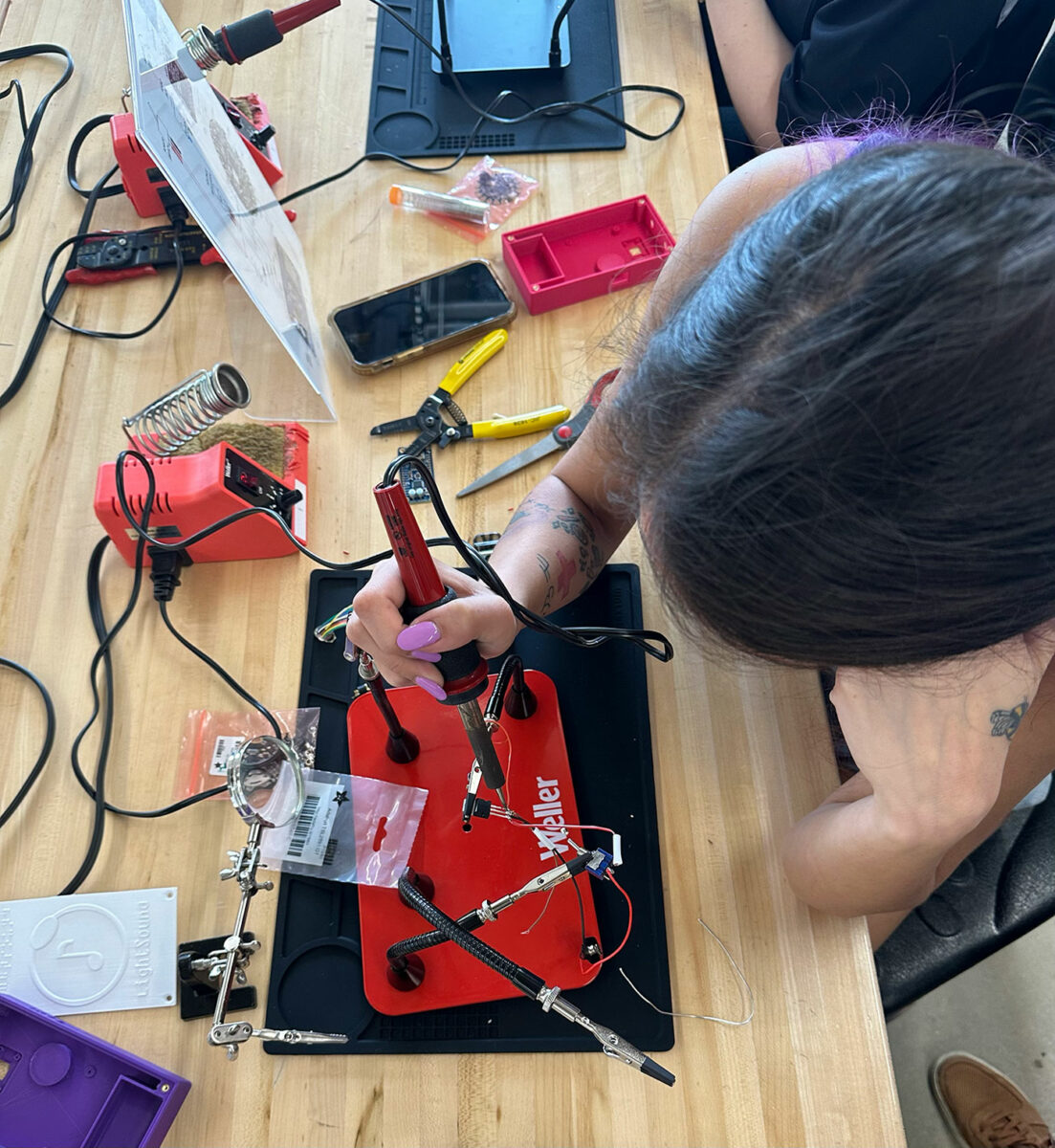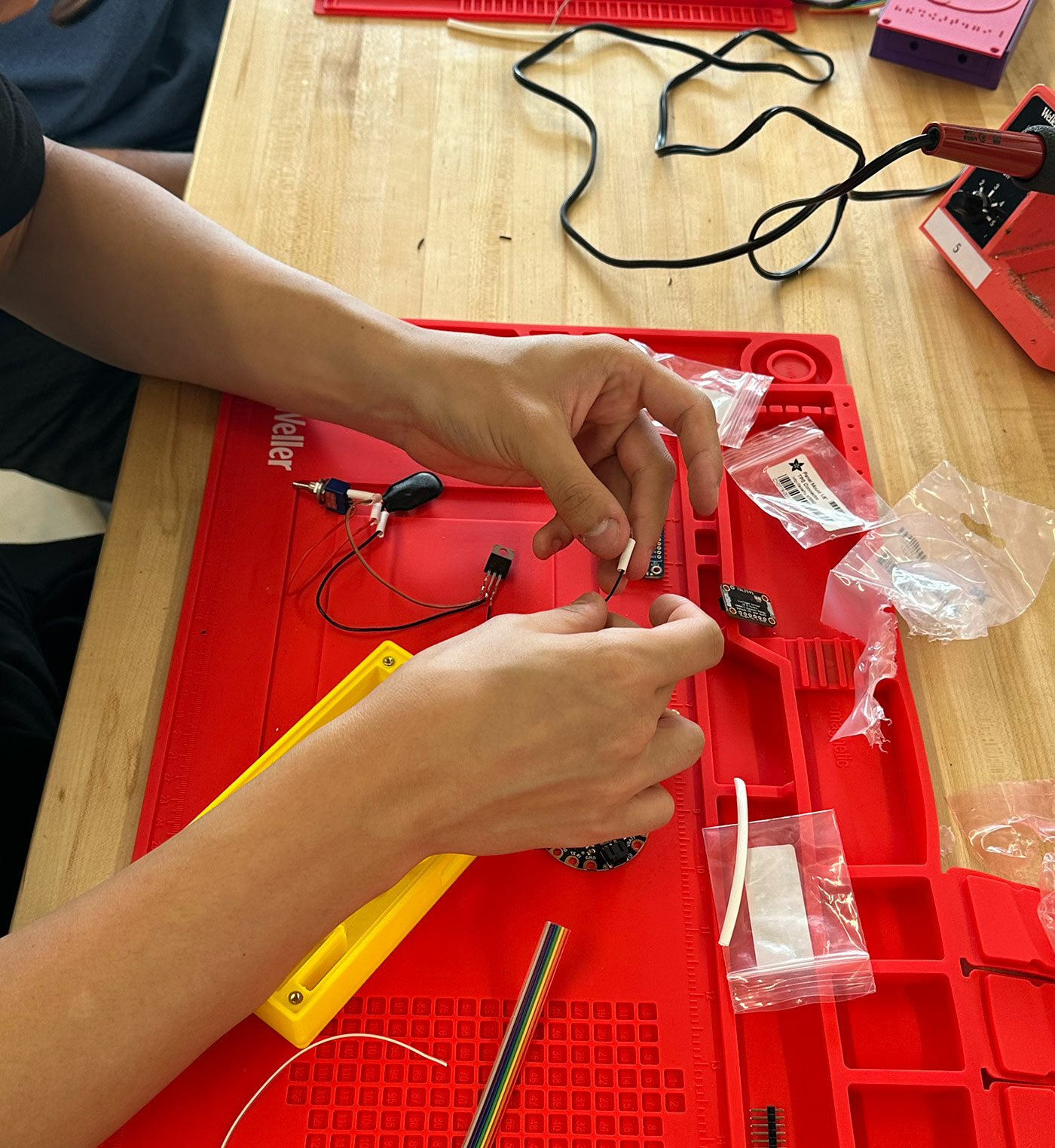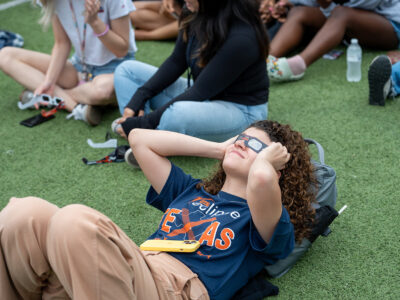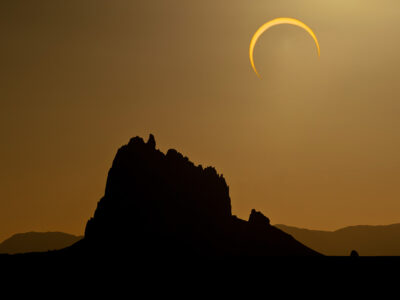Groups of UTSA undergraduate and graduate students recently gathered in the UTSA Makerspace to solder dozens of wires to circuit boards, but none of them were working on projects for their classes. They were assembling special devices that visually-impaired individuals can use to enjoy the breathtaking phenomenon of a total solar eclipse.
UTSA participated in a nationwide effort to build LightSound devices, which convert light into sound to make solar eclipses more accessible to people who are blind or have low vision. Similar in size to an iPhone, the rectangle-shaped LightSound devices come in various colors and house a bed of wires connecting circuit boards.
The students donated the devices to various organizations to be used for the upcoming total solar eclipse on April 8, and previously for the “Ring of Fire” eclipse, which occurred on October 14, 2023.


“It’s important to make science accessible so that everybody can participate in science,” says Lindsay Fuller, the UTSA eclipse project manager and a lecturer in the UTSA Department of Physics and Astronomy. “This is one aspect of sonification that we can actually participate in and get students to participate in. That way, everybody can experience the eclipse.”
The LightSound devices sonify light, applying a sound to the intensity of light as the moon slowly covers the sun during the total solar eclipse. A light sensor monitors the brightness of sunlight, which declines as the moon gradually moves in front of the sun. As the moon’s shadow, called the umbra, enlarges and darkens, the device emits a deeper tone. Then, as the moon completes its passage across the sun and sunlight increases once more, the tone rises in response.
KSAT 12’s Tiffany Huertas met with several Roadrunners in the fall of 2023 as they assembled LightSound devices and demonstrated how they work.
Allyson Bieryla, an astronomer at Harvard University, helped develop the The LightSound Project for the 2017 Great American Eclipse. The initiative has since grown nationwide and UTSA was eager to participate.
“We want to get everybody excited about eclipses,” Fuller says.
UTSA senior Tiffany Jensen was among the group of students assembling the devices and found the experience to be incredibly rewarding.
“It may be a small amount being made here, but that’s contributing to so much more nationwide,” Jensen says. “I’m happy we can do something about getting people who can’t see something so visual like an eclipse able to experience it with the rest of us.”
The UTSA Main Campus will be on the inner edge of the path of totality for the April 8 total solar eclipse. Those on campus will catch the totality of the eclipse for 2½ minutes, from 1:33 to 1:35 p.m.
Lindsay Fuller recently appeared on the Planet UTSA podcast for an in-depth conversation about the LightSound Project.


